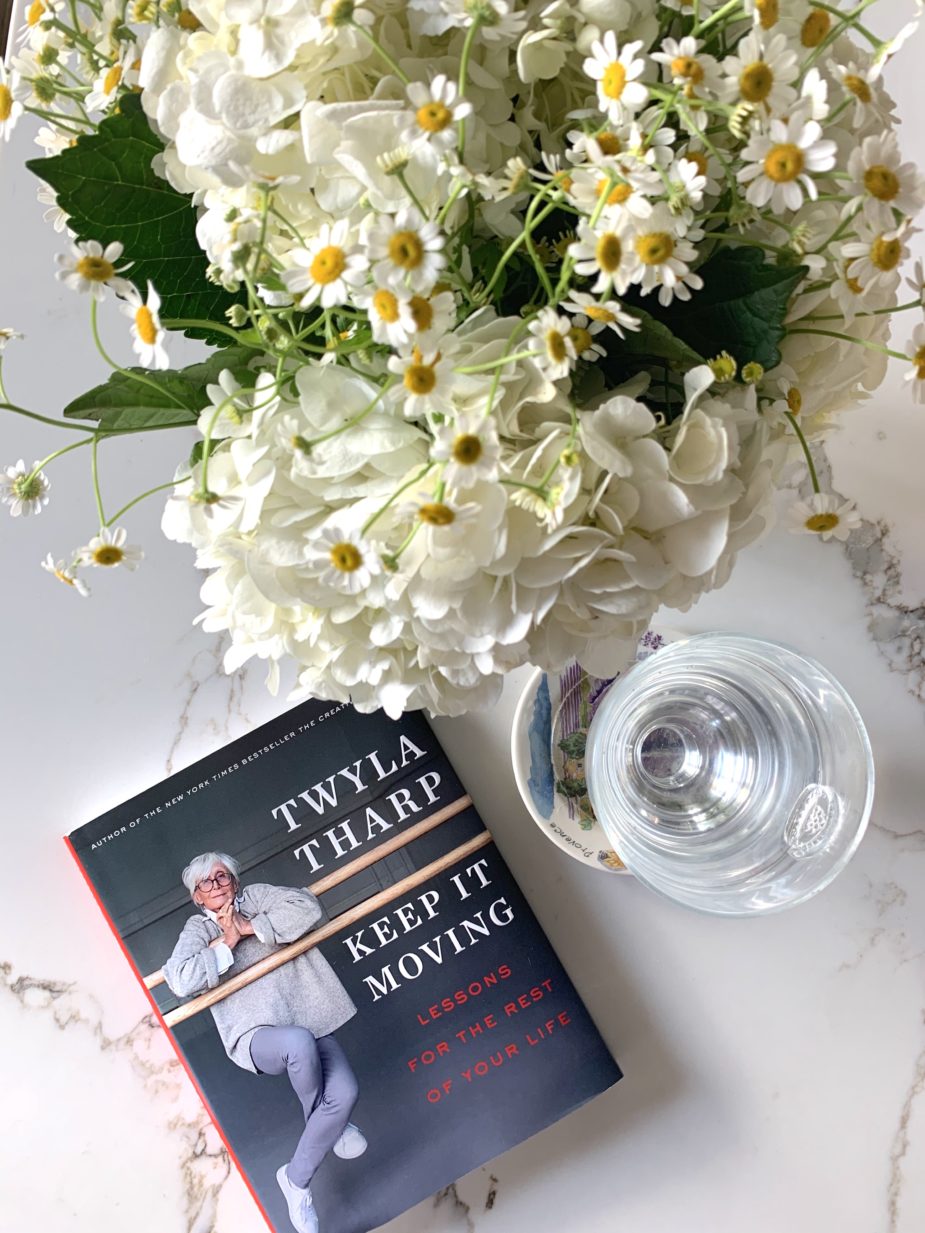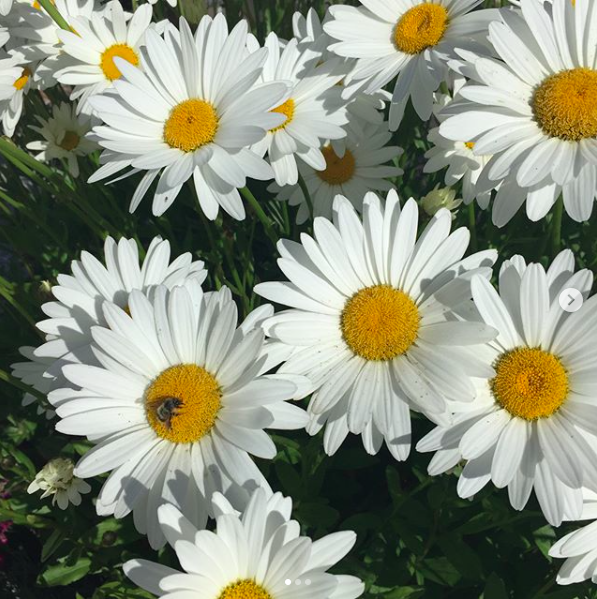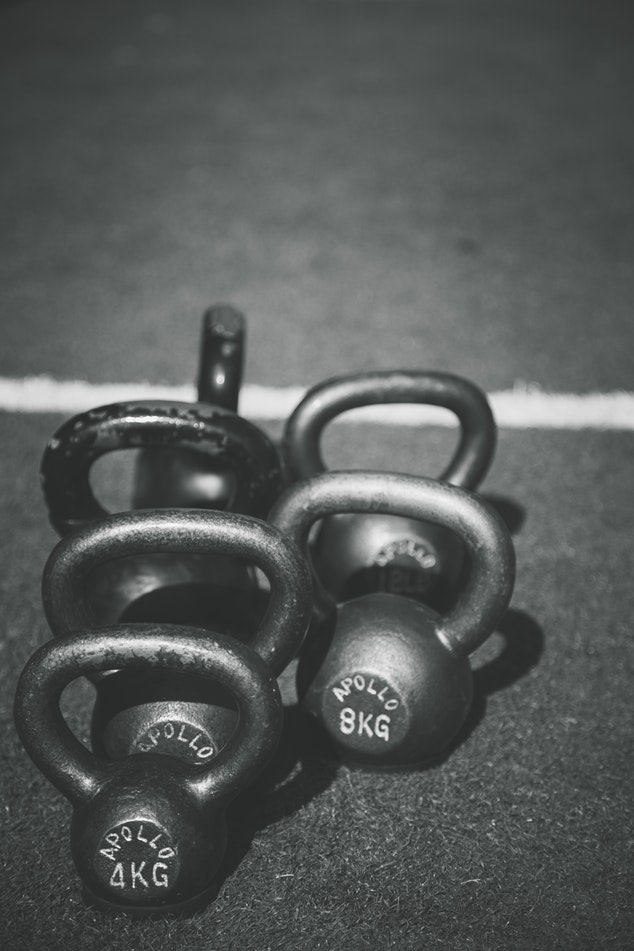273: 12 Key Factors to Life-Long Physical and Mental Good Health
The Simple Sophisticate - Intelligent Living Paired with Signature Style - A podcast by Shannon Ables - Miercuri

Categories:

"Vitality means moving through life with energy and vigor, making deliberate choices and putting to good use the time and energy that we have been granted." —Twyla Tharp, author of Keep Moving: Lessons for the Rest of Your Life
Knowing how to care for our body which we must not forget includes the mind is a lifelong course of learning. Beginning with the basics of how food is fuel and energy expends said fuel to understanding which fuel is best and how our body repairs itself and ultimately what the body and mind truly are capable of regardless of our age, understanding and then apply this knowledge will have a powerfully positive effect on the overall longevity as well as quality of our life.
Highly decorated and revered American dance choreographer, Twyla Tharp released a new book this past fall, and as I appreciated her insights in her previously published book The Creative Habit, I was especially curious to read her new book Keep Moving as she herself is in her mid-seventies and more fit than most adults in their prime. However, what I quickly discovered is that Keep Moving is not only about the physical movement we must continue throughout the duration of our lives, but the continual movement of our thoughts, ideas and way of living and thinking about the world that is as well ever-changing and evolving. Below are 12 key factors for living and enjoying a physical and mental well-being for the entire length of your life.
1.Practice Growth
"Age is not the enemy. Stagnation is the enemy."
Both physically and mentally, choose to perpetually be a dynamic individual. Instead of becoming complacent or resigned that certain capabilities are no longer possible once we hit a certain age, vow to always keep your body moving, as well, and perhaps most importantly, your mind. Rather than reminiscing about the past, make sure it is celebrated and/or learned from and then put your focus on moving forward well, learning something new in your next venture into something that provokes your curiosity. Let go of past hurts and anger that may be lingering to liberate yourself to create a better present and then a greater future will unfold. Assess your daily routines: Are they working for you? If not, whip them into shape (listen to episode #272 for help on how to accomplish this change).
"Attempting to maintain the status quo, smoothing our skin, and keeping our tummies trim become distractions that obscure a larger truth. Attempting to freeze your life in time at any point is totally destructive to the prospect of a life lived well and fully. All animate creatures are destroyed when frozen . . . This is not a worthy goal."
2. Choose and then Cultivate the Life You Want to Live
"I chose my life, it did not choose me."
Inevitably, life will throw onto your journey's path trauma, loss and pain, but how you choose to work with these life events will determine the overall quality of your life. You can choose to wallow and seek out sympathizers that allow you to remain in your pain or frustration or anger, or you can acknowledge the pain, let yourself work through it in a healthy manner and continue to strive forward.
"The life we choose pays dividends. The life that we let choose us will bankrupt us."
Contrarily, you will need to find the courage within yourself to choose to step away from the group when it feels limiting or confining or not aligned with the life you wish to live or dare to create. Nothing need happen that is negative, just a instinctive feeling that something does not work for you. Heed your instincts, explore them gradually, and when you have some footing (it need not be a perfect stance), step away from the group. I am confident you will be grateful you did, more and more so with each passing day.
You may be wondering, how does #2 correlate with our physical health? Any time we choose a life that we want to live, we energize ourselves; oppositionally, when we follow, when we go along to appease or to not create conflict, our energy lessens, so much so that we find it hard to motivate ourselves to care for our overall health. It may not occur, and most likely will not occur initially as we follow, but with time, our excitement about living life is dulled, and when we no longer see the joy in living life (because we haven't chosen this life, it has chosen us and we feel 'stuck' within it) we do not, consciously or unconsciously, invest in it. And tending to our health is a fundamental investment.
3. See Your Body's Good Health as a Full-Time Job for a Lifetime
Much of society may appear to be modeling that as we age, we become less physical, but the reality and what needs to be realized, Tharp argues, is that "the older we get, the more we should commit to physical activity". Ironically, we could have moved less in our youth as our body was helping us out far more naturally than it is able to do on its own as we age. But the benefit of being an active child and young adult is that we can take these good habits and let them be the foundation of our physical activity throughout our lifetime.
The benefits of physical activity have been researched and proven time and time again, from sharpening our mind to "expanding our social, emotional and intellectual well-being". A shift in how we view physical activity can help tremendously to finding infinite wells of motivation to move our bodies on a regular basis. First, make it enjoyable. Find something you love doing. I used to be one of those gym rats who would visit my neighborhood gym (at this point in my life I was in NW Portland) nearly every day, hop on the treadmill and walk or run for 20-30 minutes. Granted, any physical activity is absolutely applaudable, but I will admit, I felt as though I was in a cage. My lifestyle has certainly changed over the past 14 years as my physical exercise is outdoors nearly every time, and the only indoor physical practice I do, and thoroughly enjoy, is the weekly yoga class I attend. Most importantly, I have found a way of staying physical that I enjoy. Find what works for you and how you can incorporate your physical and natural environment into your playground. And then just do that, play!
Tharp reminds readers of the importance of why we choose to exercise, "Let's not burn calories. Let's use our calories . . . You're burning calories to acquire skills". When we make this shift of why we are exercising, the motivation is more likely to remain and become habituated.
"Here's what I know: a life that gives the body its due is a happy life."
4. Pull up the Anchor of the Past and Sail
"Unless we embrace the condition of change, the past will act as an anchor, preventing growth. I've always been an advocate of habit—but with time, unchecked or unnoticed habits will hold you back."
Life has many chapters, and not one will be exactly like another. Living consciously gives us the daily practice of assessing what is working and what is not. As Tharp suggest above, habits are helpful . . . when they are helpful to living the life we wish to live. However, habits that go unassessed are the anchors we need to pull up so that we can sail toward and eventually fulfill our true potential.
There are many examples in our lives in which a habit worked exceptionally well for a period, but too continue would harm our progress and need to grow. If you are a parent whose children have left the nest, there will be new habits to add and other established habits that will need to be "pulled up". If you are an individual who needed to work with great dedication to complete a degree or complete a project or establish themselves in their career requiring long hours as there were deadlines to meet, etc., the habits that enabled you to be focused and strong in dedication will need to be relaxed so that you can find the balance to enjoy the life you have worked hard to secure.
5. Choose Optimism
Tharp acknowledges that "aging can promote a condition identified by psychologists at the University of Pennsylvania as learned helplesslness . . . believing we cannot change our outcome leads to lethargy. Negativity and stagnation go hand in hand". The remedy is actually quite simple, but it does require us to become clear about the life we wish to live, to do the homework of living, living well and being conscious of our instrinstic motivators as well as the external motivators and determining which truly align with our most sincere self.
Tharp suggests, and I concur, what we need to do is align our actions with our values. Often we say we wish to live one way, but our actions speak differently. Sometimes it will take grand courage as we will have to speak up to those in our lives who will be affected if we change our routine, our way of engaging, etc., but often it is how we speak to ourselves, how we allocate our time and where we spend our money. When you begin to see how to better align your actions with your values, it becomes easier to be optimistic because you are now fully supporting the life you wish to live and not unconsciously fighting against it. Momentum happens more freely without resistance.
The primary point is we have more control over the quality of our lives. We are not helpless. And we need not accept that things cannot be different. They can be, and will be when you choose to shift how you live your daily life. A simple way to begin being more optimistic is to see the simple beauty and awesomeness in the everyday. When you focus on the good, on the positive, on the beauty, you begin to see more of it, inspire those around you to see more of it and ultimately begin to create more of what you wish to see than what you do not. Check out my IG account and the hashtag #tsllelevatetheeveryday for simple visual reminders of everyday beauty.
6. Plan - Put Your Hopes into Action
Currently, I find myself moving into the planning part of customizing my home, but admittedly, it is easier to dream and hope that it will all come together. But hoping and dreaming won't bring it to fruition. While certainly, the first part of the journey may be a hope or a dream, it cannot be where we remain.
Referring back to the premise of Tharp's book and #1 on this list, growth needs to be perpetually occurring in our lives, and so, we must step forward and put our hopes into action. How? By planning, and tending to each step listed in the plan. Sometimes it is hard to actually make the step toward our desired goal, but the momentum provided with each step, makes the next step easier. Seeing your money being spent on whatever detail, item or necessary piece of the journey needs to be spent can be initially hard to do, but if your plan is clear and your goal is in alignment with your values, you will reflect upon the money spent as an investment and be thankful for your courage to step forward and put your hopes into action.
7. Strengthen and Maintain Your Stamina
"While many of our physical tools diminish noticeable as we age—speed, flexibility, and power—we don't have to lose stamina."
Moving your body, keeping your muscles strong, on a regular basis will fundamentally keep your stamina strong. And what helps build and strengthen and maintain your muscles? Repetitions done regularly. It may not be fun initially, but in reference to #3, find an approach that engages you, and cultivate it into a habit that is part of your daily/weekly routine. Tharp has a handful of suggestions on pages 96-7. Eventually, the stamina turns into endurance which is "a combination of willpower, focus, intention and grit—essentially a matter of character and mental toughness".
"The wonderful thing about stamina: it doesn't deplete through a long period of grinding work; with sustained commitment, it builds and builds, up to the moment when you need it most".
8. Small changes can make a big difference
"When I can't build a cathedral, I build a bridge to get there."
Whether you are trying to welcome new habits into your life as the new year begins, trying to build a dream that will take time to materialize, the small steps, the small actions and small everyday dedicated efforts will eventually lead to the grand change and actualization you seek.
9. Build a foundation for your future
Compound interest plays a role in our physical and future physical lives as well as in our financial lives. When we "work hard now to reap greater rewards in the future instead of finding [ourselves] in a panic at your dwindling account", we are building a future of a wealthy good healthy life well into our later years. The working hard is doing what you can now as early as you can in your life physically to maintain the three pillars of a healthy body: strength, flexibility, aerobic (view more Health & Fitness posts in TSLL's Archives). Start where you are, but push through the necessary discomfort, aka as challenging pain (but be aware of the difference between that and warning or chronic pain).
Each time I have taken a week off from yoga or the first time I hop on my skis in the new winter season, 48 hours later my muscles are talking to me. It is not a bad pain, in fact, I applaud myself for pushing myself further, but I also am reminded to get back on the regular schedule so that I do not have to feel it everytime for the same reasons.
10. Dekludge
Tharp introduced the term 'kludge' to me in Keep Moving which is any short-term inelegant solution. In other words, it is using a convenient 'fix' for a hiccup or problem, but not the best fix.
To dekludge is to check our ego at the door, and this is not easy for most of us, and especially hard for some of us. As the pages of our book are turned and new chapters arise, "you have to be willing to find other ways of being in the world beyond those that have served you well throughout your life". In other words, we have to self-assess (which is a good skill to hone no matter where we are in life's journey and to practice it regularly). We have to become aware and then challenge unproductive behaviors in order to live our most fulfilling and best life.
Tharp suggests our kludges are "all trade-offs and allowances [we] make to deal with deflating circumstances—by ignorning, tolerating, or avoiding the situation. Sometimes we're aware that we're settling for less than optimal. Sometimes we believe we don't have any other choice. We treat them as systematic, the way things are. These kludges shackle and slow us down." Any time you adhere to "the way you've always done it" as your sole reason for doing something, most likely, you've found a kludge that needs to be let go.
The good news is that with maturity, dekludging has the ability to be far easier.
"[With maturity], we've learned that no one else is responsible for our success or survival. It's up to us to erect a stable scaffolding that's not stressed by temporary fixes and what is left can be pretty amazing."
11. Adjust to Improve Your Life
"All master adjusters learn to push their strengths and drop everything else—resentment, insecurity, doubt, physical handicaps."
With life, we have the opportunity to gain experience, and with that experience we can handle new life experiences far better than without the earned experience. And perhaps life's difficulties never become easier, only different, but because we have the past experiences, we are able to better and more easily navigate through them without working ourselves up into a frenzy or racheting up our stress-levels unnecessarily. In other words, we become better able to soar through life and not be knocked down by the gulls and gusts that will inevitably happen because we know how to foresee their coming further from a distance and either avoid them altogether or when caught by surprise, dance with them rather than fight them so as to preserve our energy to better enjoy the many good moments that await on the other side of the storm.
12. Become Keepers of the Quotidian
"Finding absolute beauty in the humble, the everyday, the living, the growing, the becoming is a skill that can be practiced with more than just the eye."
Using all of our senses as we go about our day is a skill to master for living well. Sometimes being so acutely aware can be heartbreaking which means we need to live consciously and choose how we engage with the world and who we engage with. However, once we are aware of the power of engaging all of our senses, our everyday (quotidian) lives magically appear to be in brilliant Monet-esque color. From the scent of the rain that falls on the dry ground, to the feel of the fresh, seasonal produce picked up at the market to the sound of chirping birds enjoying their morning meal in your yard's bird feeder, when we pay attention to these details with our whole being, our appreciation and love of life rises.
Good health asks of us to invest each day, but the investments need not be expensive or back-breakingly painful. How wonderful to understand that simply by instituting enjoying daily habits we can improve our overall well-being to further ease our mind that not only is our present more enjoyable to experience but so too will be our future.
I highly recommend Twyla Tharp's new book, Keep Moving. I whizzed through it during my two week holiday this past month as she offers her own experience as a renowned dancer and choreographer who is now in her 70s as evidence of what indeed does work, as well as introduces readers to many others who have inspired her journey of good health and wellness of mind and body.
SIMILAR POSTS/EPISODES YOU MIGHT ENJOY:

4 Healthy Habits for Continual Self-Growth, episode #17
Petit Plaisir:
—Simple Bouquets combining two different textured, but similar hued floral varietals - one more formal, one more whimsical. Not only will this save money, but it will add a depth of intrigue and beauty beyond a single varietal bouquet.
~See a couple of examples below from my own home.



